Function Orbital carrier rocket Height 29 metres (95 ft) Mass 107,000 kg Diameter 2.5 m Failure 2 | Stages 3 Mass 107,000 kg | |
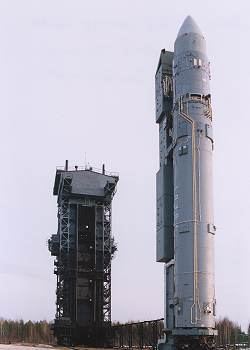 | ||
Payload to LEO 1,950 kilograms (4,300 lb) Payload to SSO 1,200 kilograms (2,600 lb) Similar Sentinel‑3A, Soil Moisture and Ocea, Kosmos 2470, Vostok, Gravity Field and Steady‑St | ||
Russian rokot rocket launches 3 low earth communication satellites
The Rokot (Russian: Рокот meaning Rumble), also transliterated Rockot, is a Russian space launch vehicle that can launch a payload of 1,950 kilograms into a 200 kilometre high Earth orbit with 63° inclination. It is a derivative of the UR-100N (SS-19 Stiletto) intercontinental ballistic missile (ICBM), supplied and operated by Eurockot Launch Services. The first launches started in the 1990s from Baikonur Cosmodrome out of a silo. Later commercial launches commenced from Plesetsk Cosmodrome using a launch ramp specially rebuilt from one for the Kosmos-3M rocket. The cost of the launcher itself was about 15 million in 1999; Eurockot contract with ESA for launching Swarm in September 2013 was worth €27.1 million ($36 million).
Contents
- Russian rokot rocket launches 3 low earth communication satellites
- Rokot launches geo ik 2 geodetic satellite
- Specifications
- History
- References
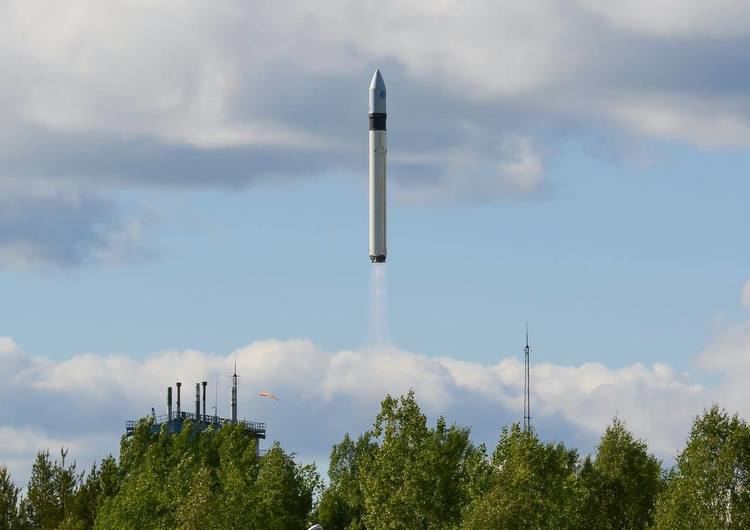
Rokot launches geo ik 2 geodetic satellite
Specifications
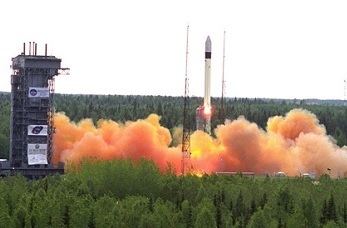
Rokot's total mass is 107 tonnes, its length 29 metres and its maximum diameter 2.5 metres. The liquid-fueled rocket comprises three stages. The lower two are based on the Soviet UR-100N ICBM; the first stage uses an RD-0244 engine, while the second stage uses an RD-0235. The third stage is a Briz-KM (Russian: Бриз-КМ meaning Breeze-KM), which has a mass of about 6 tonnes when fuelled, and is capable of flying for 7 hours and reigniting its engine six times during flight, allowing different satellites to be placed into different orbits. All stages use UDMH (unsymmetrical Dimethylhydrazine) as fuel and dinitrogen tetroxide as oxidiser. The Strela is a similar rocket, also based on the SS-19.
History
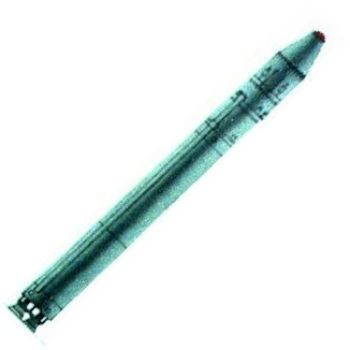
The first suborbital test launch succeeded on 20 November 1990 in Baikonur Cosmodrome. On 26 December 1994 Rokot brought its first satellite into Earth orbit. In 1995, Khrunichev State Research and Production Space Center formed a company with German DaimlerBenz Aerospace to market Rokot launches for commercial use. Later, the company was renamed to Eurockot Launch Services. Eurockot bought 45 Rokots from the Russian strategic missile forces to build its inventory. In 2000, Eurokot was partly bought by the German company Astrium GmbH, a shareholder of Arianespace. Astrium now holds 51% of Eurockot's shares, while Khrunichev holds 49%.
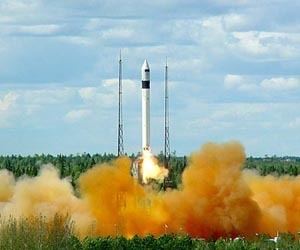
Although there are several silos in Baikonour capable of launching Rokots, it was decided to build an open, non-siloed launch pad at Plesetsk Cosmodrome instead. This is because of concerns that the amount of noise generated during a silo-based launch would damage satellites. In the new pad, Rokot is wheeled up to the structure in a vertical position, and then embraced by its launch tower. The payload is lifted by a crane and placed on top of the bottom two stages. The procedure is in contrast to other Russian launchers, which had traditionally been assembled horizontally and then transferred to the launch site via railways. The first launch from Plesetsk took place on 16 May 2000.
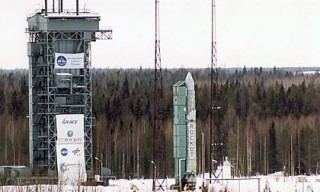
After 6 entirely successful launches, a launch failure occurred on 8 October 2005, leading to the loss of the European Space Agency's CryoSat spacecraft. The launch vehicle 2nd stage main engine was not shut down properly, resulting in a catastrophic failure and automatic termination of the launch mission by the on-board computer. The payload was lost. After the failed CryoSat launch, all Rokot launches were suspended until the failure was identified. The root cause was unambiguously identified; it was a failure in programming of the Briz-KM (which was contracted to the company JSC "Khartron"). The failure of this high-profile mission led to major reforms in Khrunichev: the director of the company Alexander Medvedev was dismissed, new launch procedures were introduced, the lines of management were straightened out to catch errors and the new Khrunichev chief, Viktor Nesterov, was required to report directly to the head of the Russian Space Agency, Anatoli Perminov. Corrective measures for Rokot's return-to-flight were implemented for the South Korean Kompsat-2 earth observation satellite launch which took place successfully on 28 July 2006. The Korean side reportedly praised the level of service they received, encouraging the Rokot team to rebuild its order book.
Another launch failure occurred in February 2011, when a Briz-KM malfunction resulted in the Geo-IK-2 No.11 satellite being placed into a lower orbit than planned.
